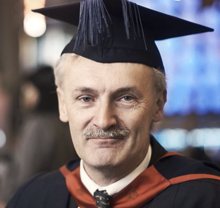
The Astonishing Story of Nick Brown, Who Debunked the Mathematics of Happiness

Readers of our blog should be quite familiar with ‘The Happiness Lady’, who managed to dupe PNAS to get her genetics paper accepted (check Tragedy of the Day: PNAS Got Duped by Positivity Lady !!). UK’s Guardian published a nice commentary on Nick Brown, who exposed this lady’s previous highly cited ‘mathematical’ paper. His advice for other would-be rebels - “If you want to be a whistleblower you have to be prepared to lose your job.” His advice to Frederickson and other scientists - “What you do in science is you make a statement of what you think will happen and then run the experiment and see if it matches it. What you don’t do is pick up a bunch of data and start reading tea leaves. Because you can always find something. If you don’t have much data you shouldn’t go round theorising. Something orange is going to happen to you today, says the astrology chart. Sure enough, you’ll notice if an orange bicycle goes by you.” Tell that to ENCODE-leaders.
More from the Guardian piece -
The astonishing story of Nick Brown, the British man who began a part-time psychology course in his 50s and ended up taking on America’s academic establishment
………………..
Fredrickson is a distinguished psychologist, a professor at the University of North Carolina, a winner of several notable psychology awards and bestselling author of a number of psychology books, including Positivity, which took her and Losada’s academic research and recast it for a mass audience the subtitle ran “Top-Notch Research Reveals the 3-to-1 Ratio That Will Change Your Life”.
“Just as zero degrees celsius is a special number in thermodynamics,” wrote Fredrickson in Positivity, “the 3-to-1 positivity ratio may well be a magic number in human psychology.”
Fredrickson is the object of widespread admiration in the field of psychology. Martin Seligman, former president of the American Psychological Association and a bestselling author in his own right, went so far as to call her “the genius of the positive psychology movement”. On top of which she is also an associate editor at American Psychologist.
By contrast, Brown was a first-term, first-year, part-time masters student who was about to take early retirement from what he calls a “large international organisation” in Strasbourg, where he had been head of IT network operations. Who was he to doubt the work of a leading professional which had been accepted by the psychological elite? What gave him the right to suggest that the emperor had gone naturist?
“The answer,” says Brown when I meet him in a north London cafe, “is because that’s how it always happens. Look at whistleblower culture. If you want to be a whistleblower you have to be prepared to lose your job. I’m able to do what I’m doing here because I’m nobody. I don’t have to keep any academics happy. I don’t have to think about the possible consequences of my actions for people I might admire personally who may have based their work on this and they end up looking silly. There are 160,000 psychologists in America and they’ve got mortgages. I’ve got the necessary degree of total independence.”
Armed with that independence, he went away and looked at the maths that underpinned Fredrickson and Losada’s ratio. Complex or non-linear dynamics are not easy for an untrained mathematician to understand, much less work out. Losada, who claimed expertise in non-linear dynamics, was working as a business consultant and making mathematical models of business team behaviour when he first met Fredrickson.
Read the rest here. It is well- written and goes over how the ‘scientists’ are paid through grants, high- profile books and lecture circuits paying $30,000-$50,000 an engagement.